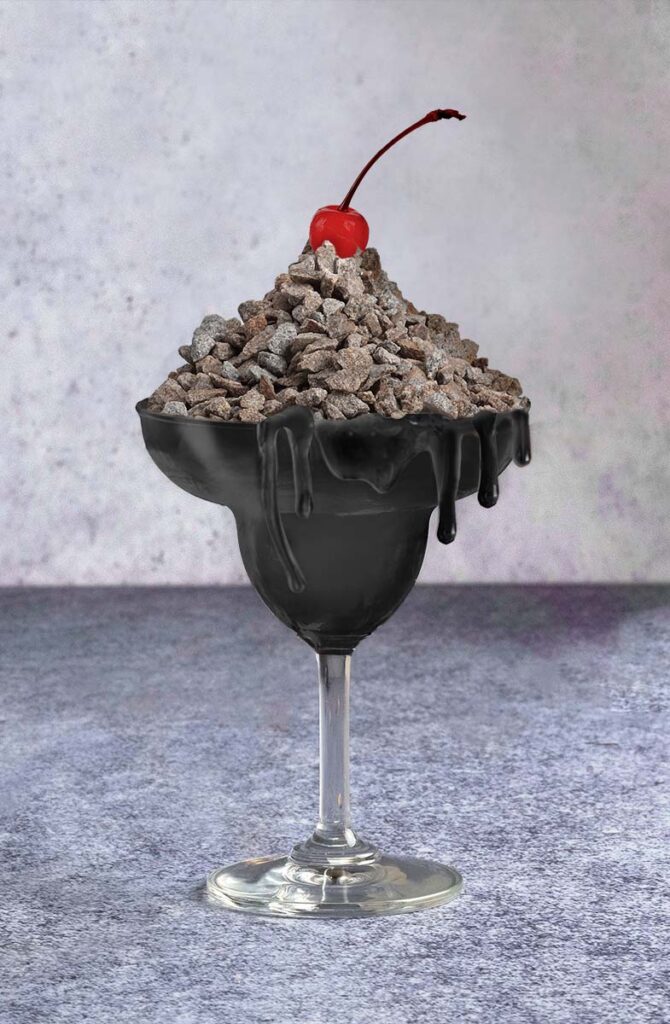Rock of Ages
Nothing much ever happened in the suburban housing tract where I grew up. About the only source of stimulation was the jingling Good Humor truck that occasionally made surprise appearances on summer days. I was part of the generation of “free-range children” who were sent outside in the afternoon and told to return by dinnertime, and pretty much did what we wanted in between. We could go anywhere our bicycles could take us, unsupervised. If there was an unoccupied construction site nearby, we’d be climbing over the equipment and sifting through the dirt. If there was a fire or auto accident, we’d be there in a matter of minutes, watching the crews handle the emergency.
Most of the time, though, there was nothing special to do, so we’d be hanging out in front of our houses, playing street games or shooting the breeze. It was always during one of those idle times that the street pavers came around. The first sign was always a distant rumble accompanied by an acrid smell. Eventually the truck itself would appear, spewing black smoke as it crawled up the street and laid down a gooey layer of tar. Another truck would follow not far behind, depositing a heavy layer of gravel atop the hot tar.
As I remember it, there was no warning that the paving was going to happen. Whatever cars were parked on the street remained there as the trucks did their work. (I’m not sure how those curbside shoulders were maintained — perhaps since they didn’t host moving traffic, they didn’t need frequent repaving.) The tandem trucks, never stopping, lumbered into the distance, leaving behind a sea of loose gravel.
From that point on, any car that drove on our street would be accompanied by a loud crackling and pinging as the gravel flew out from under the tires and bounced against the undercarriage. No one seemed to take any notice. It would take a few weeks for the gravel to fully sink down into the tar, restoring the appearance of a smooth road surface.
Two things strike me. The first is just surprise that our streets were paved with tar and gravel. Today, even remote country roads are paved with asphalt, as are the streets in that neighborhood where I grew up. I liked the gravel. It could be picked up, played with, and used in school projects. When I made a diorama showing how the ancient Egyptians carried stone on barges to build the pyramids, the part of the stones was played by gravel from my street.
(As an aside, I remember that we referred to the bits of gravel as “pebbles.” It was only much later in adulthood that I found out that pebbles technically are stones that are worn smooth by the action of water. If they’re not pebbles, I don’t know what those individual pieces of gravel are supposed to be called.)
The other surprising thing is how routine the street paving appears to have been. It happened every four years, with no notice and no fuss. As I said, we neighborhood kids always seemed to be outside when it happened, and although it was fun to watch, it also felt uneventful. Every day, the fire station horn sounds at noon; every week, the newspaper delivery boy comes to collect his fee; and every four years, the road gets repaved. It was simply the rhythm of life in the Long Island suburbs.
I don’t know what it’s like to be a child in the current era, but my sense is that there’s no such sense of steady and dependable rhythm. Family life and the school environment have a tendency to be disturbing and unpredictable, and for me, the assurance that there was an underlying order — even if it revealed itself only once every four years — was somehow comforting. I feel for the kids who no longer even have that small amount of comfort.
As I write this, a one-block segment of our street in Oakland is having a cable laid under it, and the work seems endless — scheduled to last ten days, with constant noise and no street parking. I like to imagine that a plow-like truck could travel up the street, carving a furrow in the roadbed, and another truck could follow behind, laying the cable and filling the furrow with blacktop. I guess we’d need a third truck to tamp down the blacktop, but still, the whole process ought to take about twenty minutes, no? Since kids don’t play outside anymore, no one would even notice.

I think my kids have a healthy balance of steady predictable rhythm – the morning routine, after school activities, holidays – and unpredictability. We had a sink hole in the middle of the intersection by our house that the city of Oakland placed some sand bags and a cone in. It served as a temporary roundabout. We hoped it would stay there forever because it slowed traffic down. Give Oakland’s infrastructure challenges, we thought that it might. And then, one day, a crew came, and dealt with it. Now there’s a strange flatbed trailer thing on the street in front of our house that appeared on a day when a bunch of utility vehicles did. They departed. It’s still here. Does it belong to the city? A private contractor? We’re enjoying speculating about it.